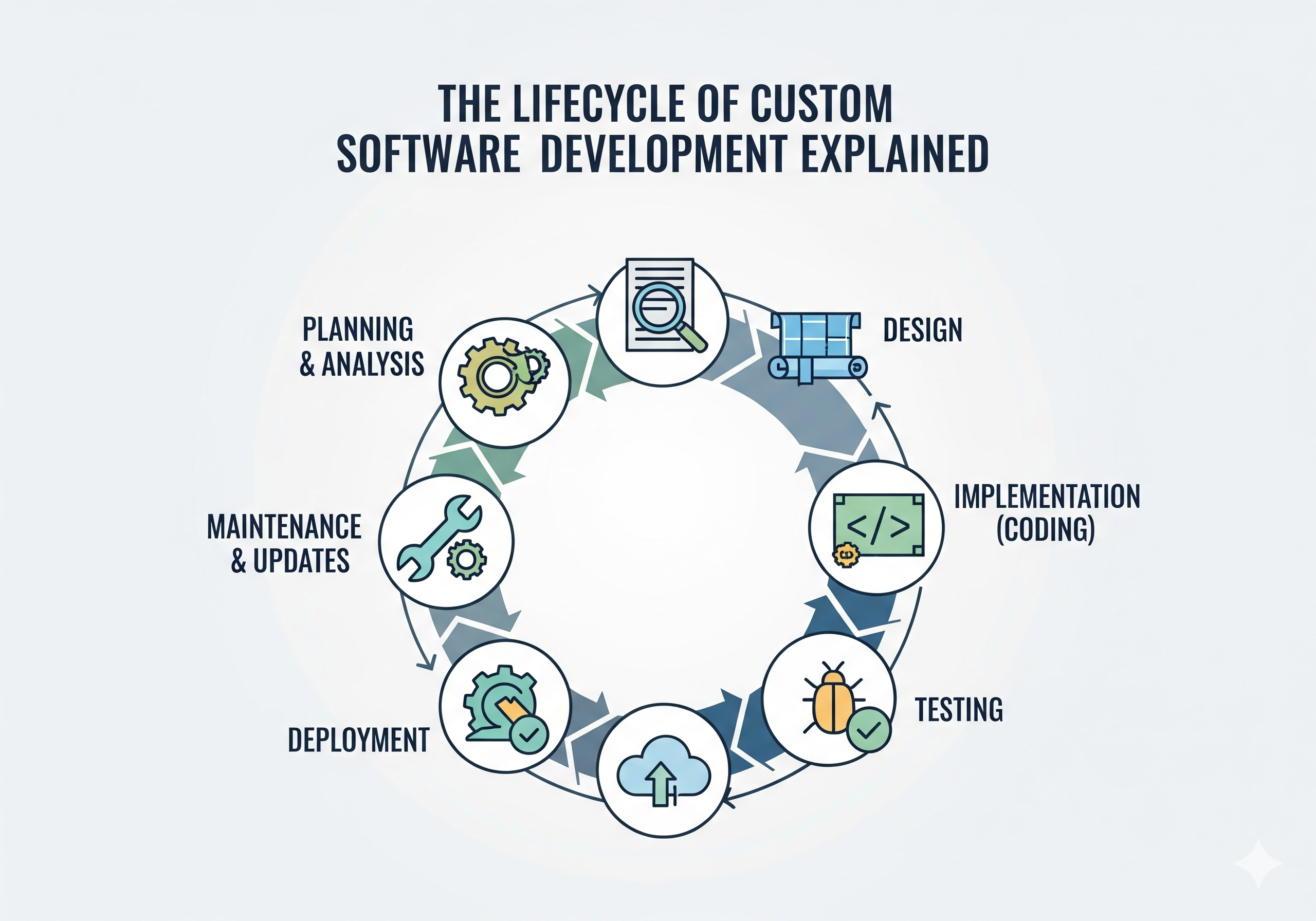The process of developing software specifically suited to a company’s needs is known as custom software development. Custom software, as opposed to off-the-shelf solutions, is designed to address particular problems, boost productivity, and facilitate expansion. Businesses can more efficiently plan, implement, and maintain software if they have a thorough understanding of its lifecycle.
These are the main phases of the development lifecycle of custom software.
1. Requirement Gathering and Analysis
Knowing what the business needs is the first step. Stakeholders and developers talk about the objectives, difficulties, and expectations. Identifying user needs, technical limitations, and desired features are all part of this phase.
Gathering requirements accurately guarantees that the project gets off to a good start. Clear requirements documentation lowers the possibility of expensive changes later in the development process and helps avoid misunderstandings.
2. Design and Planning
The design phase starts as soon as the requirements are clear. Developers plan system workflows, design user interfaces, and build software architecture. Planning also entails allocating resources, estimating timelines, and selecting the appropriate technologies.
A robust design guarantees the software’s scalability, security, and ease of use. Additionally, it serves as a guide for developers to follow when coding, which lowers errors and boosts productivity.
3. Development and Testing
Developers use the design specifications as a guide when writing code during this phase. Agile approaches are frequently employed because they enable frequent feedback and incremental development.
An essential component of development is testing. QA teams look for usability, performance, and bug issues. Prior to deployment, continuous testing guarantees that the software satisfies quality standards. User acceptability testing, integration testing, and unit testing may be part of this phase.
4. Deployment and Maintenance
The software is released into the live environment following development and testing. Installation, configuration, and user training are all part of deployment.
Maintenance is a continuous stage. Over time, software may require bug fixes, new features, or updates. Frequent monitoring guarantees that the program will continue to satisfy business requirements and adjust to evolving technology.
Why Understanding the Lifecycle Matters
Businesses can better manage expectations, budgets, and timelines by understanding the lifecycle of custom software development. It guarantees that each step is carefully thought out and carried out, resulting in better software and happier customers.
Every stage, from requirements collection to maintenance, helps produce software that truly adds value. Long-term benefits that promote productivity, expansion, and creativity include custom software.
Conclusion
Custom software development is an organized process that transforms business concepts into workable solutions. Businesses can create software that is dependable, scalable, and easy to use by closely adhering to each step: requirements, design, development, testing, deployment, and maintenance.
There is more to developing custom software than just writing code. From comprehending business challenges to providing solutions that propel success, it’s a journey. The key to developing software that actually benefits the company is careful planning, execution, and continuing support.




